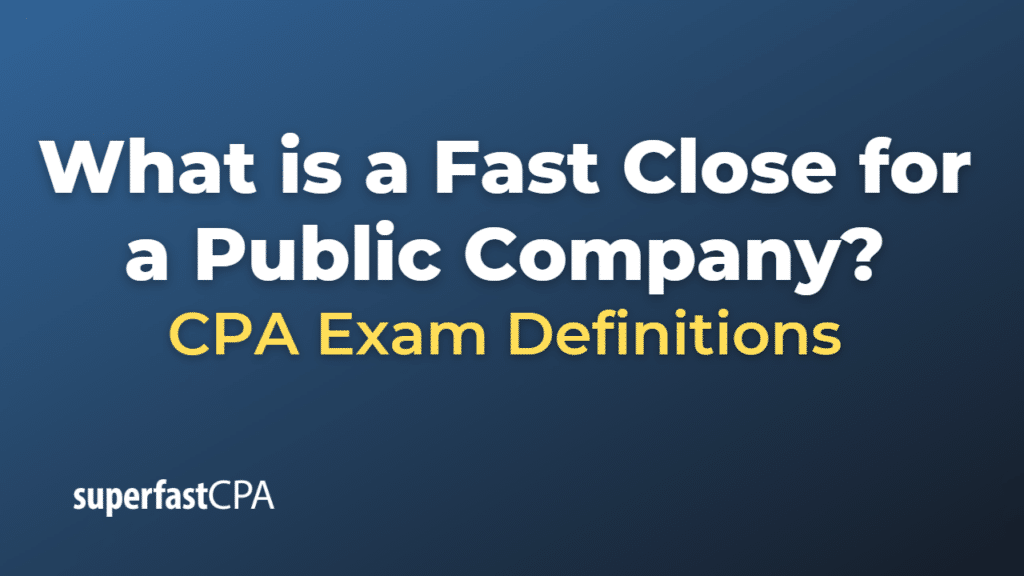Fast Close for a Public Company
A “fast close” refers to the process where a public company quickly completes its financial statements at the end of a reporting period. The goal of a fast close is to reduce the time between the end of the accounting period and the date when the financial statements are issued. This enables the company to provide timely information to investors, analysts, and other stakeholders.
Fast closing is considered a best practice in financial management. It indicates that a company has efficient processes and systems in place and shows that management has a strong understanding of the company’s financial position.
The steps to achieving a fast close may include:
- Streamlining Processes: This might involve automating routine tasks, minimizing manual entries, and standardizing processes across different parts of the organization.
- Improving Communication and Collaboration: This involves improving coordination between different departments involved in the closing process (such as finance, sales, and operations) and ensuring that everyone understands their responsibilities and deadlines.
- Enhancing Systems and Technology: Implementing or upgrading financial software can automate various parts of the closing process and make it more efficient.
- Regular Review and Reconciliation: Conducting reviews and reconciliations continuously throughout the accounting period can help identify and resolve issues before the period-end, making the closing process smoother.
While a fast close can provide more timely financial information, it’s also essential that the process does not compromise the accuracy and integrity of the financial statements. Therefore, appropriate controls and checks need to be in place to ensure the reliability of the financial information.
Example of a Fast Close for a Public Company
Let’s consider a public company – Company A – which previously took 45 days after the end of the quarter to finalize and release its financial statements.
Company A decides it wants to move to a “fast close” to provide more timely information to its investors and stakeholders. To achieve this, they implement the following steps:
- Streamline Processes: They standardize the closing procedures across all departments and minimize manual entries by automating as much of the process as possible.
- Improve Communication and Collaboration: They establish clear responsibilities and deadlines for each department involved in the closing process. Regular meetings are held to ensure everyone is on track and to resolve any issues quickly.
- Enhance Systems and Technology: They upgrade their financial software to automate the reconciliation process and improve data accuracy and consistency.
- Regular Review and Reconciliation: Instead of waiting until the end of the quarter, they start to perform reconciliations and reviews continuously throughout the quarter. This allows them to catch and correct errors in a timely manner.
After implementing these changes, Company A manages to reduce the closing time from 45 days to 20 days. This allows them to provide their investors with quarterly financial results much faster than before, leading to increased investor confidence in the company’s management and financial processes. However, they also ensure they maintain rigorous controls and checks to ensure the accuracy of their financial statements.














